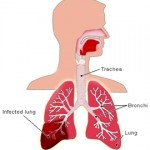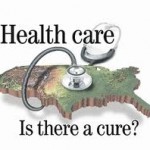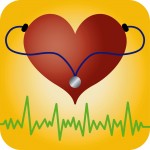Medclaims

THREE MINDSETS FOR GROWING YOUR BUSINESS AND SALES
08/13/2012
(An article by Ron Karr, taken from the July/August issue of HBMA Billing)
http://www.hbma.org/news/public-news/n_three-mindsets-for-growing-your-business-and-sales

PHYSICAL THERAPY REFERRALS FOR PRIME BENEFICIARIES
Physical therapists should review the authorization approval letter from TriWest that is sent in response to the authorization request for physical therapy services. The letter provides the date range for which services have been approved. If services are not provided within that date range, a new referral from the primary care manager (PCM), Military Treatment Facility (MTF), or specialist is required to avoid higher out-of-pocket costs for the beneficiary under the point-of-service (POS) option and potential delays in care.
Also, if the authorization approval letter indicates that services are “NOT APPROVED” because “…TriWest has not received a referral from the Primary Care Manager (PCM) or from a Military Treatment Facility (MTF) provider for this specialty within the previous 180 days or the time period noted in the initial referral,” then the services will pay under POS unless the beneficiary obtains a referral from their PCM or MTF. If not considered medically necessary, physical therapy services may be denied.
Please note that physical therapy exceeding 20 visits per episode of care requires a prior authorization for beneficiaries over age 21. Also, any combination of physical therapy and occupational therapy greater than 40 visits per episode for beneficiaries over age 21 also requires prior authorization.
Refer to the Referrals/Authorizations section of TriWest.com/Provider for more information about the referral and authorization process and available resources.
Source: Tricare eNews; August 8, 2012

ELECTRONIC PATIENT BILLING IS HERE
Medclaims is happy to announce that electronic patient billing is a service now available to clients. Patients receive emails with links to a “Patient Portal.” The HIPAA compliant portal interfaces with the patients records, via secured messages. Patients can view their balances and pay with credit cards and electronic checks.

PULMONARY REHABILITATION (PR) SERVICES
Jurisdiction 1 Part BPulmonary Rehabilitation (PR) Services
- Physician-prescribed exercise
- Education or training
- Psychosocial assessment
- Outcomes assessment
- An individualized treatment plan
- Effective January 1, 2010, Medicare Contractors will pay claims containing Healthcare Common procedure Coding System (HCPCS) code G0424 when billing for PR services, including exercise and monitoring, as described in the Medicare Benefit Policy Manual, Chapter 15, section 231, as revised by CR 6823, and the Medicare Claims Processing Manual, Chapter 32, Section 140, as revised by CR 6823. These revised documents are attached to CR 6823, which is available at http://www.cms.gov/Transmittals/downloads/R124BP.pdf (Benefit Policy Manual) and http://www.cms.gov/Transmittals/downloads/R1966CP.pdf (Claims Processing Manual) on the CMS website.
- Medicare Contractors will pay claims for HCPCS code G0424 (PR) only when services are provided in the following places of service (POS): 11 (physician’s office) or 22 (hospital outpatient). Medicare will deny claims for HCPCS code G0424 performed in other than, and billed without, POS 11 or 22, using the following:
- Claim Adjustment Reason Code (CARC) 58 – ‘treatment was deemed by the payer to have been rendered in an inappropriate or invalid place of service. NOTE: Refer to the 835 Healthcare Policy Identification Segment (loop 2110 Service Payment Information REF), if present.’
- Remittance Advice Remark Code (RARC) N428 – ‘Service/procedure not covered when performed in this place of service.’
- Group Code PR (Patient Responsibility) assigning financial liability to the patient if the claim was received with a GA modifier indicating a signed Advance Beneficiary Notice (ABN) is on file or Group Code CO (Contractual Obligation) assigning financial liability to the provider if the claim is received with the GZ HCPCS modifier indicating no signed ABN on file.
- Medicare Contractors will pay claims for PR services containing HCPCS code G0424 and revenue code 0948 on Types of Bill (TOB) 13X and 85X under reasonable cost.
- Contractors will pay for PR services for hospitals in Maryland under the jurisdiction of the Health Services Cost Review Commission on an outpatient basis, TOB 13X, in accordance with the terms of the Maryland waiver.
- Contractors will deny claims for PR services provided in other than TOB 13X and 85X using the following:
- CARC 58 – ‘Treatment was deemed by the payer to have been rendered in an inappropriate or invalid place of service. NOTE: Refer to the 835 Healthcare Policy Identification Segment (loop 2110 Service Payment Information REF), if present.’
- RARC N428 – ‘Service/procedure not covered when performed in this place of service’
- Group Code PR assigning financial liability to the patient if the claim was received with a GA modifier indicating a signed ABN is on file or Group Code CO assigning financial liability to the provider if the claim is received with the GZ HCPCS modifier indicating no signed ABN on file
- Using the Medicare Physician Fee Schedule, Medicare Contractors will also pay for PR services billed with HCPCS code G0424 and revenue code 096X, 097X or 098X on TOB 85X from Method II critical access hospitals (CAHs).
- Medicare will deny PR services that exceed two units on the same date of service and, in doing so, will use the following:
- CARC 119 – ‘Benefit maximum for this time period or occurrence has been reached’
- RARC N362 – ‘The number of days or units of service exceeds our acceptable maximum’
- Group Code PR assigning financial liability to the patient if the claim was received with a GA HCPCS modifier indicating a signed ABN is on file or Group Code CO assigning financial liability to the provider if the claim is received with the GZ HCPCS modifier indicating no signed ABN on file
- Medicare will normally pay for 36 sessions of PR, but may pay up to 72 sessions when the claims for sessions 37-72 includes a KX HCPCS modifier. Claims for HCPCS code G0424 which exceed 36 sessions without the KX HCPCS modifier will be denied using the following:
- CARC 151 – ‘Payment adjusted because the payer deems the information submitted does not support this many/frequency of services’
- Group Code PR assigning financial liability to the patient if the claim was received with a GA HCPCS modifier indicating a signed ABN is on file or Group Code CO assigning financial liability to the provider if the claim is received with the GZ HCPCS modifier indicating no signed ABN on file
- Medicare Contractors will deny claims for HCPCS code G0424 when submitted for more than 72 sessions even where the KX HCPCS modifier is present. In the denials, contractors will use the following:
- CARC B5 – ‘Coverage/program guidelines were not met or were exceeded’
- Group Code PR assigning financial liability to the patient if the claim was received with a GA HCPCS modifier indicating a signed ABN is on file or Group Code CO assigning financial liability to the provider if the claim is received with the GZ HCPCS modifier indicating no signed ABN on file

2012 BRINGS MORE HEALTH CARE REFORM CHANGES
The Affordable Care Act (ACA) has already changed many things. Federal medical loss ratio requirements become enforceable for the first time this year, and both insurers and employers begin paying an annual fee that will help fund patient-centered outcomes research. Based on provisions that took effect previously, plans must cover dependent children up to age 26. There are no lifetime dollar limits on “essential” health benefits, and only certain annual dollar limits on “essential” health benefits unless the plan received a temporary government waiver from this requirement.
It is impossible to predict at this point how the Supreme Court will rule and whether the law will change. The ACA is the law, and we are prepared and ready to meet new requirements as they become effective. If the law does change, we remain committed to keeping you informed of any new developments and related next steps.
Visit Health Reform Connection to stay informed on health care reform.
Source: Aetna CustomerLink, May, 2012

5010 ELECTRONIC CLAIM SUBMISSION
On March 22, 2012, a Technical Direction Letter announced that to ensure that Medicare Fee-For-Service (FFS) will be fully compliant with all the Accredited Standards Committee X12 Version 5010, NCPDP Telecom D.0 (NCPDP D.0) and NCPDP Medicaid Subrogation 3.0 (NCPDP 3.0) standards, Medicare claims administration contractors shall immediately modify their systems to not reject any Part A or Part B transactions for failing to use Version 5010 until July 1, 2012. This means that submitters may continue to submit claims in Version 4010, although this is highly discouraged by your MAC, and we will do everything possible to assist you in becoming 5010 compliant. Please share with appropriate staff.
Reprinted: Palmetto GBA. March 28, 2012.

CLINICAL PAYMENT, CODING AND POLICY CHANGES – AETNA.
We regularly adjust our clinical, payment and coding policy positions as part of our ongoing policy review processes. In developing our policies, we may consult with external professional organizations, medical societies and the independent Physician Advisory Board, which provides advice to us on issues of importance to physicians. The accompanying chart outlines coding and policy changes.
Follow link to source for details. http://www.aetna.com/newsletters/provider/OfficeLinks/2012/March/clinical-coding-changes.html

TAKE STEPS TO REDUCE HEART RISKS
TAKE STEPS TO REDUCE HEART RISKS
February is American Heart Month — a time to reflect on the sobering fact that heart disease remains the number one killer of both women and men in the United States. The good news is you have the power to protect and improve your heart health.
NIH and other government agencies have been working to advance our understanding of heart disease so that people can live longer, healthier lives. Research has found that you can lower your risk for heart disease simply by adopting sensible health habits.
To protect your heart, the first step is to learn your own personal risk factors for heart disease. Risk factors are conditions or habits that make you more likely to develop a disease. Risk factors can also increase the chances that an existing disease will get worse.
Certain risk factors — like getting older or having a family history of heart disease — can’t be changed. But you do have control over some important risk factors such as high blood cholesterol, high blood pressure, smoking, excess weight, diabetes and physical inactivity. Many people have more than one risk factor. To safeguard your heart, it’s best to lower or eliminate as many as you can because they tend to “gang up” and worsen each other’s effects.
A large NIH-supported study published recently underscores the importance of managing your risk factors. Scientists found that middle-aged adults with one or more elevated risk factors, such as high blood pressure, were much more likely to have a heart attack or other major heart-related event during their remaining lifetime than people with optimal levels of risk factors.
“For example, women with at least 2 major risk factors were 3 times as likely to die from cardiovascular disease as women with none or 1 risk factor,” says Dr. Susan B. Shurin, acting director of NIH’s National Heart, Lung and Blood Institute. “You can and should make a difference in your heart health by understanding and addressing your personal risk.”
To tackle your heart risk factors, it helps to know your numbers. Ask your health care provider to measure your blood cholesterol and blood pressure. Then determine if your weight is in the healthy range.
The higher your cholesterol level, the greater your risk for heart disease or heart attack. High blood cholesterol itself doesn’t cause symptoms, so you can’t know if your cholesterol is too high unless you have it tested. Routine blood tests can show your overall cholesterol level and separate levels of LDL (“bad”) cholesterol, HDL (“good”) cholesterol and triglycerides. All of these blood measurements are linked to your heart health.
High blood pressure (hypertension) is another major risk factor for heart disease, as well as for stroke. High blood pressure is often called the “silent killer” because, like high cholesterol, it usually has no symptoms. Blood pressure is always reported as 2 numbers, and any numbers above 120/80 mmHg raise your risk of heart disease and stroke.
“Scientific evidence is strong that controlling high blood cholesterol and high blood pressure prevents cardiac events such as heart attacks,” says Dr. Michael Lauer, a heart disease specialist at NIH.
Your weight is another important number to know. To find out if you need to lose weight to reduce your risk of heart disease, you’ll need to calculate your body mass index (BMI, a ratio of weight to height). This NIH web page can help: www.nhlbisupport.com/bmi/bmicalc.htm. A BMI between 25 and 29.9 means that you’re overweight, while a BMI of 30 or higher means obesity.
Next, take out a tape measure. A waist measurement of more than 35 inches for women and 40 inches for men raises the risk of heart disease and other serious health conditions. Fortunately, even a small weight loss (between 5 percent and 10 percent of your current weight) can help lower your risk.
NIH has many tools available to help you aim for a healthy weight, including physical activity tips and a menu planner. To learn more, visit healthyweight.nhlbi.nih.gov.
A heart-healthy diet includes a variety of fruits, vegetables and whole grains, as well as lean meats, poultry, fish, beans and fat-free or low-fat dairy products. Try to avoid saturated fat, trans fat, cholesterol, sodium (salt) and added sugar.
NIH’s Therapeutic Lifestyle Changes (TLC) and Dietary Approaches to Stop Hypertension (DASH) diets both promote healthy eating. U.S. News & World Report named TLC and DASH the top 2 overall diets for 2012.
Regular physical activity is another powerful way to reduce your risk of heart-related problems and enjoy a host of other health benefits. To make physical activity a pleasure rather than a chore, choose activities you enjoy. Take a brisk walk, play ball, lift light weights, dance or garden. Even taking the stairs instead of an elevator can make a difference.
“At least 2 and a half hours a week of moderate-intensity physical activity can lower your risk of heart disease, stroke, hypertension and diabetes — a winner on multiple counts,” says Dr. Diane Bild, a cardiovascular epidemiologist at NIH.
If you have diabetes, it’s important to keep your blood sugar, or glucose, under control. About two-thirds of people with diabetes die of heart or blood vessel disease. If you’re at risk for diabetes, modest changes in diet and level of physical activity can often prevent or delay its development.
If you happen to be a smoker, the best thing you can do for your heart is stop. People who smoke are up to 6 times more likely to suffer a heart attack than nonsmokers. The risk of heart attack increases with the number of cigarettes smoked each day.
The good news is that quitting smoking will immediately begin to reduce your risk, and the benefit in reduced risk will continue to increase over time. Just one year after you stop smoking, your risk will have dropped by more than half.
Beyond controlling your risk factors, you should be alert to certain symptoms and get checked by a doctor. Common signals that something’s wrong with your heart include angina — pain in the chest, shoulders, arms, neck, jaw or back — as well as shortness of breath, irregular heartbeat or palpitations (arrhythmia) and fatigue.
Be aware that the symptoms of a heart attack can vary from person to person. If you’ve already had a heart attack, your symptoms may not be the same if you have another one.
Finally, don’t forget that you can influence your loved ones’ heart health by setting an example. Do you have children, grandchildren or other young people who look up to you? If you follow a heart-healthy lifestyle, it’s more likely that they will, too. Because heart disease begins in childhood, one of the best things you can do for those you love is to help children build strong bodies and healthy habits.
The bottom line is, it’s never too late to take steps to protect your heart. It’s also never too early. Start today to keep your heart strong. Talk to your doctor about your risk and to create an action plan. Love your heart.
Reprinted on February 16, 2012, courtesy of NIH News in Health. For more information, please visit newsinhealth.nih.gov.

FIVE WAYS TO IMPROVE YOUR CREDIT SCORE
FIVE WAYS TO IMPROVE YOUR CREDIT SCORE
1. Get copies of your credit report — then make sure information is correct. Go to www.annualcreditreport.com. This is the only authorized online source for a free credit report. Under federal law, you can get a free report from each of the three national credit reporting companies every 12 months. You can also call 877-322-8228 or complete the Annual Credit Report Request Form ![]() and mail it to Annual Credit Report Request Service, P.O. Box 105281, Atlanta, GA 30348-5281.
and mail it to Annual Credit Report Request Service, P.O. Box 105281, Atlanta, GA 30348-5281.
2. Pay your bills on time. One of the most important things you can do to improve your credit score is pay your bills by the due date. You can set up automatic payments from your bank account to help you pay on time, but be sure you have enough money in your account to avoid overdraft fees.
3. Understand how your credit score is determined. Your credit score is usually based on the answers to these questions:
- Do you pay your bills on time? The answer to this question is very important. If you have paid bills late, have had an account referred to a collection agency, or have ever declared bankruptcy, this history will show up in your credit report.
- What is your outstanding debt? Many scoring models compare the amount of debt you have and your credit limits. If the amount you owe is close to your credit limit, it is likely to have a negative effect on your score.
- How long is your credit history? A short credit history may have a negative effect on your score, but a short history can be offset by other factors, such as timely payments and low balances.
- Have you applied for new credit recently? If you have applied for too many new accounts recently, that may negatively affect your score. However, if you request a copy of your own credit report, or if creditors are monitoring your account or looking at credit reports to make prescreened credit offers, these inquiries about your credit history are not counted as applications for credit.
- How many and what types of credit accounts do you have? Many credit-scoring models consider the number and type of credit accounts you have. A mix of installment loans and credit cards may improve your score. However, too many finance company accounts or credit cards might hurt your score.
To learn more about credit scoring, see the Federal Trade Commission’s Facts for Consumers webpage. 4. Learn the legal steps to take to improve your credit report. The Federal Trade Commission’s Building a Better Credit Report webpage has information on correcting errors in your report, tips on dealing with debt and avoiding scams — and more.
5. Beware of credit-repair scams. Sometimes doing it yourself is the best way to repair your credit. The Federal Trade Commission’s Credit Repair: How to Help Yourself explains how you can improve your creditworthiness and lists legitimate resources for low-cost or no-cost help.
Reprinted on February 17, 2012, courtesy of the Federal Reserve. For more information, please visit www.federalreserve.gov.

GRUMBLING GUTS? IT MIGHT BE IRRITABLE BOWEL SYNDROME
GRUMBLING GUTS? IT MIGHT BE IRRITABLE BOWEL SYNDROME
Most of us feel some discomfort in our guts from time to time. It may be because we’re nervous about something, or perhaps we ate something that didn’t agree with us. But if you regularly feel aches in your abdomen, it might be a sign of a disorder called irritable bowel syndrome.
Irritable bowel syndrome affects about 1 in 5 Americans. It occurs more often in women than men, and begins before the age of 35 in about half the people who get it.
There’s no medical test to identify irritable bowel syndrome. Instead, doctors make a diagnosis based on the patient’s symptoms. The most common symptoms include bloating and pain in the abdomen, along with changes in bowel habits. People with irritable bowel syndrome may have constipation, diarrhea or both.
Irritable bowel syndrome doesn’t lead to cancer or other health problems. But its discomfort can be difficult to live with. The severe or frequent abdominal pain it can bring often leads people to visit a doctor.
Physicians and researchers don’t know for sure what causes irritable bowel syndrome. One possibility is that it comes from changes in the way that the brain and the gut communicate. Dr. Emeran Mayer at the University of California, Los Angeles, is an NIH-funded scientist who’s working to find treatments to correct altered brain-gut interactions.
“Most people would agree that stress plays an important role in triggering symptom flares in irritable bowel syndrome,” says Mayer.
Many patients first notice symptoms after a stressful event, like losing a loved one or changing jobs. People with irritable bowel syndrome often report higher levels of stress or anxiety. Stress reduction strategies and cognitive behavioral therapy, a type of talk therapy, can help relieve the symptoms of irritable bowel syndrome.
Some researchers suspect that irritable bowel syndrome can be caused by a change in gut bacteria. The gut is usually filled with helpful bacteria, which our bodies need to digest food. But sometimes the types of bacteria can change, like after taking certain medications. For people with this type of irritable bowel syndrome, a supplement of probiotics — a collection of live, healthful bacteria — might help. Probiotics are available as capsules, tablets and powders, and they’re found in some dairy foods, such as yogurts with live active cultures. The potential benefits of probiotics, however, are still under study.
Many people with irritable bowel syndrome find that certain foods can make them feel worse. “There is no specific irritable bowel syndrome diet,” says Mayer. “Irritable bowel syndrome patients are generally more sensitive to a variety of foods.”
If you have irritable bowel syndrome, try keeping a diary of the foods you eat and how they make you feel. Then, you and your doctor can decide together if you should try making changes to your diet.
Every case of irritable bowel syndrome is unique, so if you have symptoms that disrupt your life, don’t suffer in silence. Your doctor can work with you to find the treatment that works best for you.
Reprinted on February 16, 2012, courtesy of NIH News in Health. For more information, please visit newsinhealth.nih.gov.
